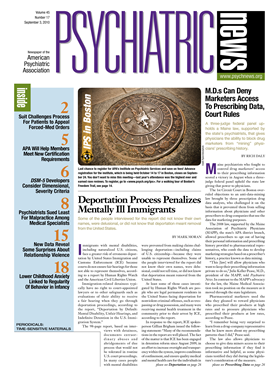Interpersonal violence during pregnancy is conventionally seen as committed by men against their women partners, but a study in progress suggests that the mix of perpetration and victimization and effects on depression and stress are more complicated than that.
Being a victim has negative effects on both men and women, and mutual violence has the worst outcomes of all, said social psychologist Trace Kershaw, Ph.D., at the International Congress on Behavioral Medicine in Washington, D.C., last month. Kershaw is an associate professor of epidemiology and public health in the Social Behavioral Sciences Program at the Yale School of Public Health.
He also is principal investigator of the PARTNRS study at Yale, which is examining interpersonal relationships during the transition to parenthood.
Prior research has shown varying rates of interpersonal violence in cohabiting young couples, ranging from 23 percent to 55 percent, and from 2 percent to 22 percent during pregnancy. Such wide ranges indicate a need for more specific research, said Kershaw.
Violence has negative effects on prenatal, psychological, sexual, and parenting outcomes, but most studies have looked only at women. There are few data on male victimization or on the effects of violence on couples.
The researchers have now studied 237 couples (out of an eventual 300) in Connecticut. Women were aged 14 to 21, and men were at least 14, with incomes mostly below $15,000 a year. About 14 percent were married, and most had a turbulent history, having broken up at least once during their relationship.
If there was good news of a sort, it was that 62 percent of the couples surveyed reported no domestic violence during pregnancy. However, 6 percent of women said they were only victims, 25 percent of men said they were only victims, and 8 percent of men and women admitted to mutual violence.
The individual self-reports on committing or being victims of violence were generally corroborated by the partner. Of the 38 percent of couples reporting violence during pregnancy, about 31 percent of men reported being victims of physical violence and 42 percent of emotional violence. Women were victims of physical violence in 11 percent of cases and of emotional violence in 27 percent of cases. Few men (3 percent) and no women reported sexual violence, which Kershaw attributes to the intact status of the relationships.
Serious violence was committed fairly equally. About 17 percent of women reported injuries, as did 20 percent of men.
The researchers collected no data on psychiatric diagnoses, but being a female victim increased the likelihood of depression and stress. Male perpetrators had the lowest risk of depression of any group.
“There was no association between male perpetration and negative mental health states like depression or stress,” said Kershaw, in an interview. “But this is something that would be worth exploring in future work.”
However, when males were victims, stress and depression levels rose to equal those of women victims. Stress and depression levels were at their highest for both men and women when mutual violence occurred, although depression was sharply higher (18 percent) for women compared with men (12 percent) in those cases.
Both groups reported reduced life satisfaction following violence.
Kershaw hopes that his continuing research will illuminate the nature and context of such violence. In the meantime, however, more could be done to help these young couples improve their relationships and lessen the likelihood of violence, he said.

